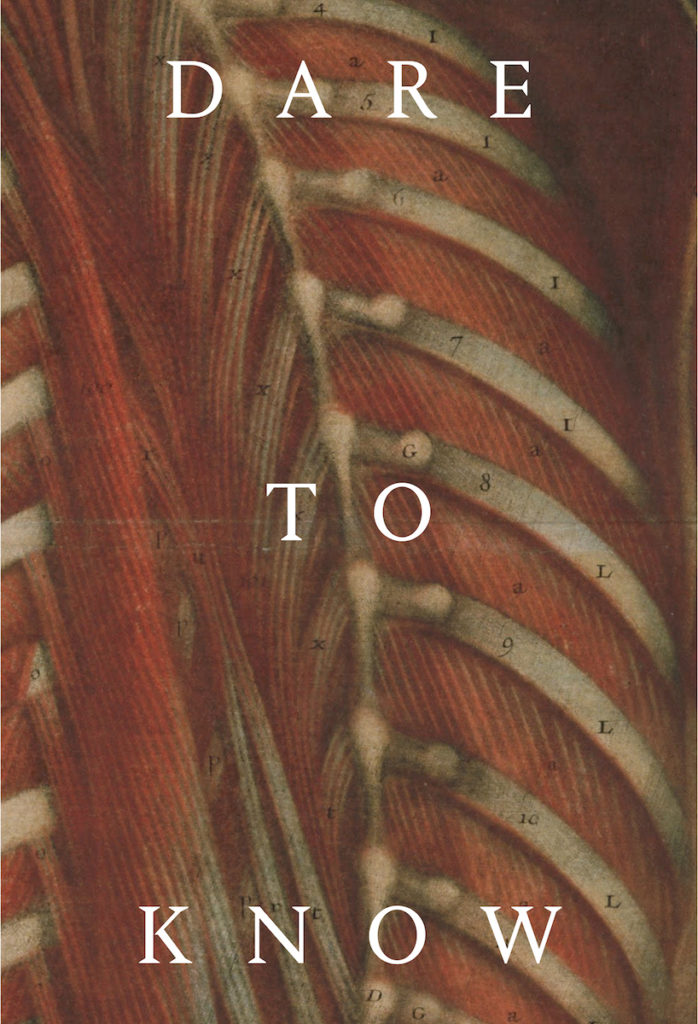Exhibition: Dare to Know: Prints and Drawings in the Age of Enlightenment, Harvard Art Museums, Cambridge, Massachusetts, September 16, 2022 – January 15, 2023.
Pictures produce knowledge. The premise is uncontroversial, but the role that visual representation has played in intellectual transformations throughout history is often difficult to pinpoint. Diagrams of planetary orbits, for example, visualized the Copernican Revolution, but to what extent did they generate it? The concept of human evolution now conjures the image of hunched primates marching in line behind increasingly upright homo sapiens, but did the development of evolutionary theory depend on such representations? In recent years, scholars have devoted growing attention to such questions, placing particular emphasis on the early modern period.[1] Susan Dackerman’s landmark 2011 exhibition at the Harvard Art Museums Prints and the Pursuit of Knowledge in Early Modern Europe did much to advance this area of study, showing how Renaissance prints served not merely as illustrations of ideas but as working tools of inquiry.[2] Now, an exhibition at Harvard extends these themes to the Enlightenment, arguing that prints and drawings served as epistemological agents throughout the eighteenth century. With extraordinary objects and a roving spirit of curiosity, the show provides one of the best opportunities to date to examine the evolving relationship between visual culture and knowledge production.
Dare to Know: Prints and Drawings in the Age of Enlightenment represents the period’s ideas with a capaciousness and complexity that few other exhibitions have captured. Curated by Elizabeth Rudy and Kristel Smentek, the show incorporates the research of graduate students and faculty whose interdisciplinary expertise matches the breadth of the subject matter (the beautifully produced catalog contains contributions from two dozen authors). The range of objects on display includes microscopic views of skin, telescopic studies of the moon’s surface, and fanciful depictions of monstrous chimera. For Rudy and Smentek, the heterogeneity of the material is part of the point: following recent scholarship, particularly the work of Antoine Lilti, they reject any attempt to provide a unified definition of the Enlightenment, instead emphasizing the contradictions and diversity of ideas that characterized the period.[3] What unites the works in the show is their use of paper as a vehicle for knowledge. The relative affordability and transportability of works on paper, the curators propose, gave prints and drawings their potency as “active agents” that shaped the Enlightenment’s manifold and conflicting ideas.[4]
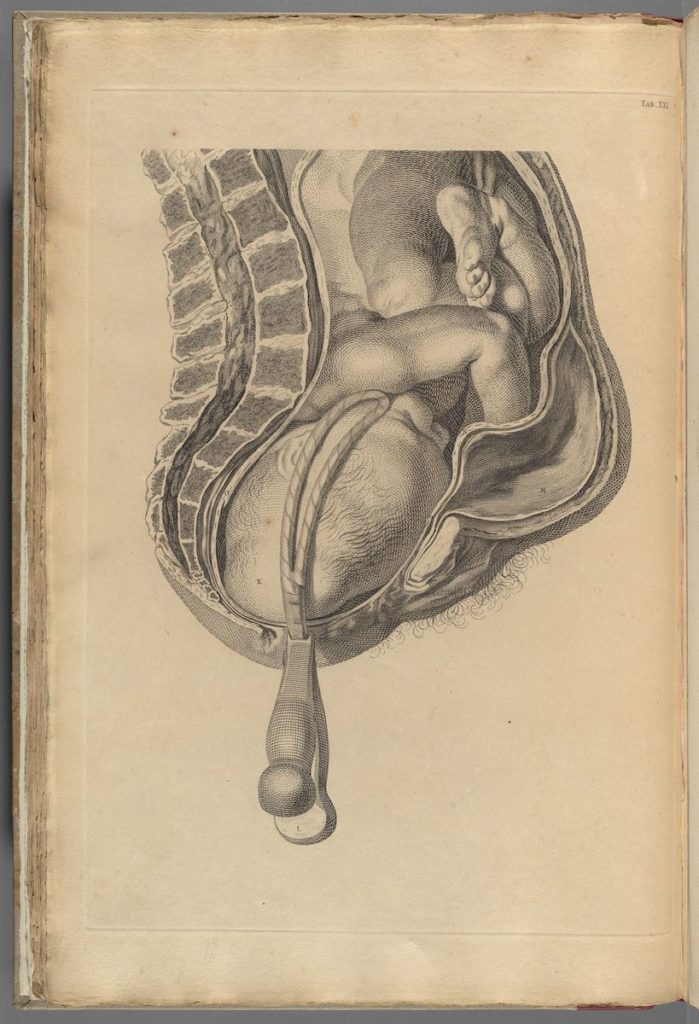
To demonstrate the Enlightenment’s contradictions, the exhibition presents compelling proof. One of the recurring themes in the show is the double-edged nature of the eighteenth-century emphasis on sensory experience as a tool of knowledge acquisition. On the one hand, the Enlightenment’s faith in observational evidence had a democratizing potential because it challenged the authority of the church and crown as arbiters of fact. On the other hand, empiricism was hardly free from bias, and its egalitarian possibilities were undermined by the reality that Enlightenment philosophers did not grant all observers equal status. In the first section of the exhibition, Charles Grignon’s engraving of a fetus within a uterus vividly testifies to empiricism’s mixed consequences (Fig. 1). The illustration shows the application of forceps to a fetus’s head during a difficult labor, depicting the mechanics of delivery in unflinching detail. Such pictures belong to an important moment of transformation in the practices surrounding childbirth, when anatomists and physicians sought to demystify a biological process that had previously been understood through a mixture of local custom and religious doctrine. But the supposedly clear-eyed view of labor and delivery that emerged during the Enlightenment had its own blind spots, as the curators remind us: a largely male group of self-anointed experts privileged their observations over the centuries-old wisdom and experience of female midwives, subjecting women’s bodies to the medicalizing control of men.
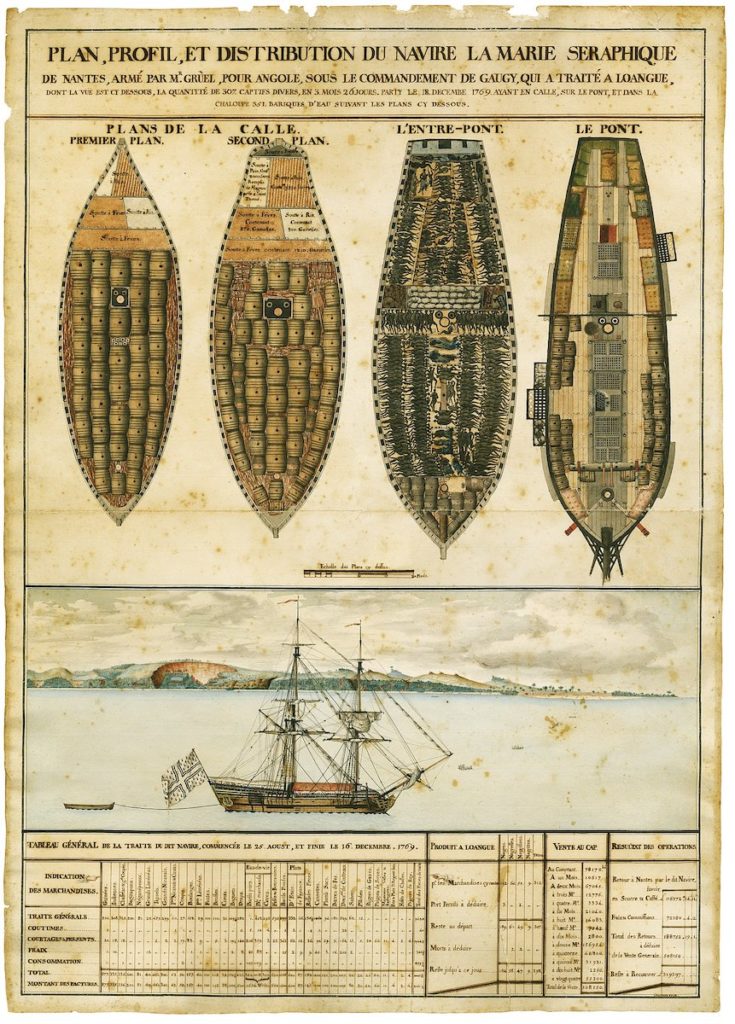
Such tensions in Enlightenment thought become especially apparent in the exhibition’s treatment of race and slavery. In the show’s second room, we encounter a startling pair of objects: a large watercolor (Fig. 2) and a broadside print (Fig. 3), each showing rows of enslaved people beneath the decks of slave ships. The two works are similar in their diagrammatic abstraction of human beings, but they were conceived with very different goals. In the case of the watercolor, the owner of the ship commissioned the picture to celebrate his vessel’s efficient design after it had completed a transatlantic journey in 1769. The print, by contrast, was published in 1789 by English abolitionists who sought to call attention to the brutal mechanisms of the slave trade. The opposing motivations behind the two pictures underscore what the curators describe as “the contradictions of the age,” revealing both the atrocious cruelty committed in the name of rationality and the sympathetic impulses that countered these injustices.
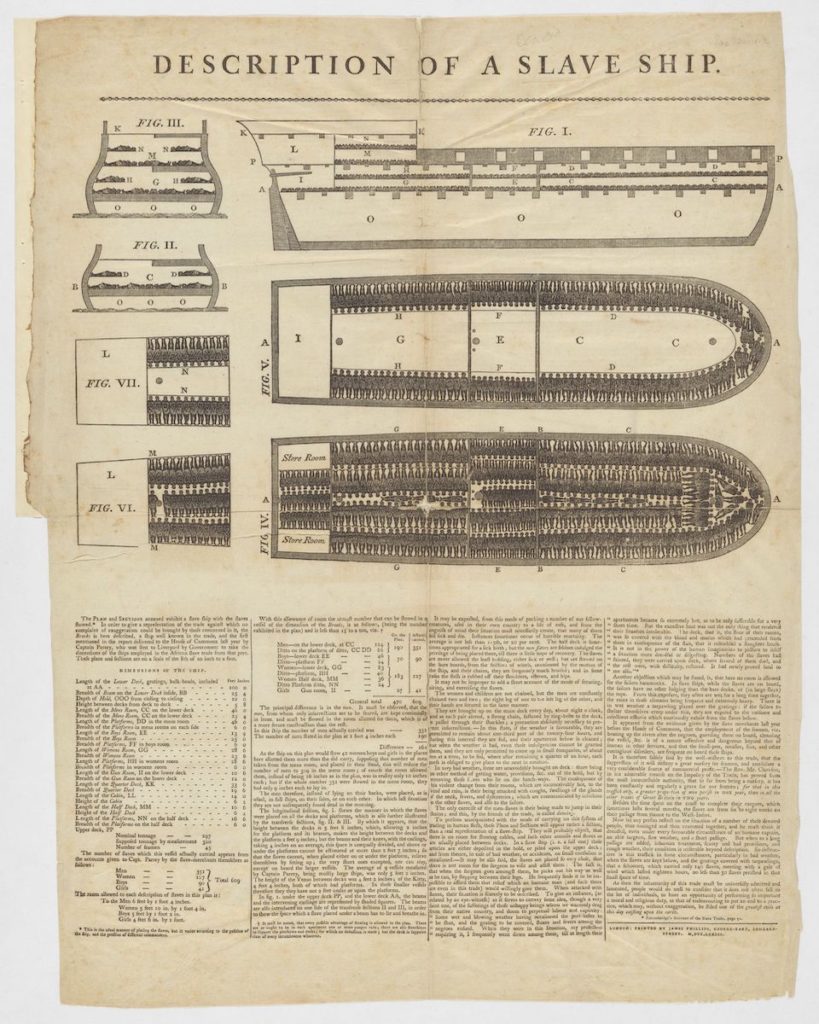
The two ship diagrams offer an additional lesson that the curators do not emphasize but that invites exploration: the degree to which the meaning of a picture depends on the context of its presentation. By delivering antithetical messages through similar iconography, the makers of the two works showed that images often function as receptacles for the ideas that people impose upon them, not as carriers of knowledge that inheres within them. The point is important because it bears on the curators’ claim that prints and drawings were “active agents” of Enlightenment thought. If nearly identical representations could be deployed for opposing aims, then how much agency should we assign to the image? Audience clearly matters. A French slave trader in 1769 could look at a picture of African people in a ship hold and see profit; English Quakers could look at a comparable subject in 1789 and see an abomination. The force of the image is difficult to separate from the preexisting convictions of those who consumed it. Abolitionists, to be sure, hoped that their diagram had the power to change minds about the slave trade. Thomas Clarkson, one of the designers of the abolitionist print, testified that the picture elicited “the tear of sympathy” of all who saw it.[5] But there were limits to the diagram’s persuasive powers. The Abolition Society sent the print to members of British Parliament in 1789, timing its distribution to coincide with debate on a motion to abolish the slave trade. The motion failed, and Parliament resisted calls to end the trade for another 18 years.[6]
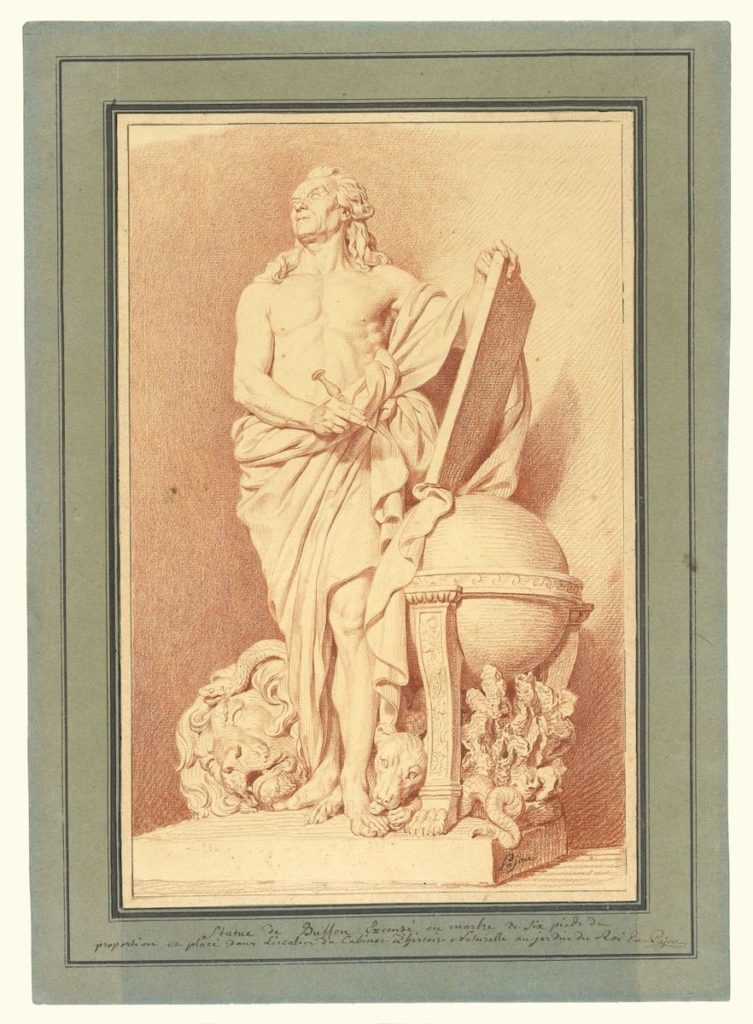
Establishing the impact of any given drawing or print requires detailed study of its reception—a challenging subject to communicate in the format of a museum exhibition. Rudy and Smentek therefore took on an ambitious task in setting out to show the agency of the graphic arts during the Enlightenment. A few modifications to the structure of the exhibition might have helped in achieving their goal. The curators generally cluster objects around different areas of knowledge. Augustin Pajou’s chalk drawing of his monument to the naturalist Georges-Louis Leclerc, comte de Buffon (Fig. 4), for example, appears alongside a natural history illustration of a polar bear. The grouping highlights Buffon’s area of research, but it distracts from the functions that different types of pictures performed. A portrait and a natural history illustration served divergent purposes and were consumed in distinct ways; if we want to understand how Pajou’s drawing of Buffon operated as an agent of Enlightenment knowledge, a more instructive comparison might be the depiction of Benjamin Franklin by Fragonard (and etched by Marguerite Gérard) that hangs on the other side of the room (Fig. 5). The two allegorical portraits, if grouped by genre and function, would enable us to consider the visual devices that artists used to convey the learnedness of their subjects, and how eighteenth-century portraiture turned knowingness itself into a formal effect.
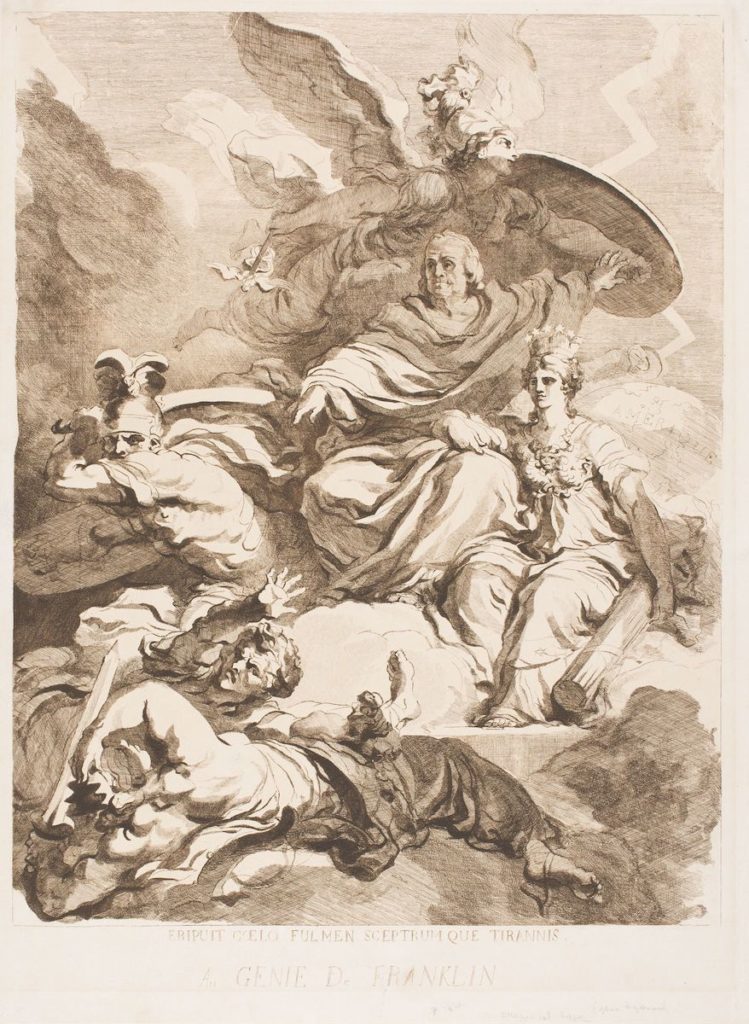
Attention to the different functions of images would also clarify the specific role that art played in Enlightenment thought. Dare to Know does not dwell on art as a distinct subset of visual representation. The works on display come from art museums as well as science libraries; drawings by major artists hang alongside medical illustrations by little-known engravers. The approach is refreshing in its refusal to elevate fine art above other categories of representation, but it obscures the extent to which eighteenth-century artists and audiences were themselves invested in such distinctions. While Enlightenment thinkers did not subscribe to the rigid dichotomy of art and science that has divided the academy since the twentieth century, they nonetheless regarded the profession of the artist as distinct from that of the anatomist or natural history illustrator. Unlike the great Renaissance polymaths such as Leonardo da Vinci and Albrecht Dürer, the major artists of the Enlightenment were not deeply involved in research beyond the arts. One of the striking features of Dare to Know, in fact, is how little overlap there is between the names on scientific illustrations and those found on the works of art that hang alongside them.
I do not mean to imply that art has no relevance to other spheres of knowledge during the eighteenth century. Art still shaped the aesthetic norms through which philosophers expressed their ideas. As Elena Russo has argued, the central conflicts of the Enlightenment were often not over knowledge itself but over the style in which knowledge was expressed, be it in improvisatory displays of wit or the sober rhetoric of the Classical tradition.[7] Art, from this perspective, structured the Enlightenment not because it was an important instrument of research or a repository of specialized knowledge but because taste and form had become essential means of establishing credibility.
The limited discussion of art’s specificity in Dare to Know is understandable. If we wish to show the important role of art in other areas of thought, it is tempting to minimize the difference between art and other types of representation. In our contemporary moment of swelling STEM budgets and declining enrollments in the humanities, art historians and curators have good reason to demonstrate that our objects of study once made substantial contributions to research and communication in other fields. The Enlightenment, because it was an era when modern disciplinary categories were emerging but still porous, permits such arguments. Yet the period’s gradual sequestration of the arts from other domains of knowledge also allows a different claim for art’s relevance, one that shows not only art’s agency but also its exceptionality. Fragonard and Gérard’s depiction of Franklin levitating in a lightning-filled sky does not teach us much about electricity, but it reveals how knowledge was aestheticized, how turbulent forms and a flash of light produced the look of genius. The picture shows not simply how eighteenth-century thinkers “dared to know” but how they appeared to know. Fragonard and Gérard were no great physicists, but they knew how to style one, which constituted a kind of knowledge all its own.
Oliver Wunsch is Assistant Professor of Art History at Boston College, Chestnut Hill, MA
[1] John Bender and Michael Marrinan, The Culture of Diagram (Stanford: Stanford University Press, 2010); Susanna Berger, The Art of Philosophy: Visual Thinking in Europe from the Late Renaissance to the Early Enlightenment (Princeton: Princeton University Press, 2017); Lorraine Daston and Peter Galison, Objectivity (New York: Zone Books, 2007); Hanneke Grootenboer, The Pensive Image: Art as a Form of Thinking (Chicago: University of Chicago Press, 2020).
[2] Susan Dackerman, ed., Prints and the Pursuit of Knowledge in Early Modern Europe (Cambridge, MA: Harvard Art Museums, 2011).
[3] Antoine Lilti, L’héritage des Lumières: Ambivalences de la modernité (Paris: Gallimard, 2019).
[4] Édouard Kopp, Elizabeth Rudy, and Kristel Smentek, eds., Dare to Know: Prints and Drawings in the Age of Enlightenment (Cambridge, MA: Harvard Art Museums, 2022), 2.
[5] Thomas Clarkson, The History of the Rise, Progress, and Accomplishment of the Abolition of the African Slave-Trade by the British Parliament, vol. 2, (London: Longman, Hurst, Rees, and Orme, 1808), 187.
[6] For the print’s reception, see Cheryl Finley, Committed to Memory: The Art of the Slave Ship Icon (Princeton, NJ: Princeton University Press, 2018), 57–86; J.R. Oldfield, Popular Politics and British Anti-Slavery: The Mobilisation of Public Opinion against the Slave Trade, 1787–1807 (Manchester: Manchester University Press, 1995), 163–66.
[7] Elena Russo, Styles of Enlightenment: Taste, Politics, and Authorship in Eighteenth-Century France (Baltimore: The Johns Hopkins University Press, 2007).
Cite this note as: Oliver Wunsch, “Dare to Know: A Review,” Journal18 (December 2022), https://www.journal18.org/6648.
License: CC BY-NC
Journal18 is published under a Creative Commons CC BY-NC International 4.0 license. Use of any content published in Journal18 must be for non-commercial purposes and appropriate credit must be given to the author of the content. Details for appropriate citation appear above.

